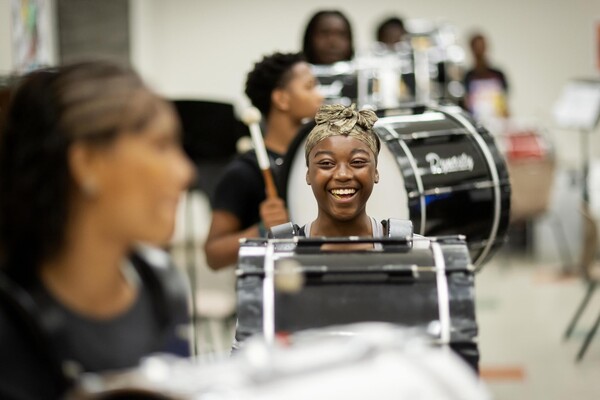
Image: Aditya Irawan/NurPhoto via AP Images
(In the second of a two part series on the University of Pennsylvania’s inaugural Penn Global Seminars, two professors share how they crossed schools and disciplines to co-teach a course with an embedded short study-abroad trip to Paris.)
What happens when one of the leading urban planning scholars works with a 19th and 20th century French literature scholar to design a University of Pennsylvania undergraduate seminar? They create a new course called “The Making of Modern Paris,” offered for the first time as a Penn Global Seminar to undergrads this year.
Eugenie Birch and Andrea Goulet taught the spring semester course and led students in a week of study in Paris during spring break. Birch is the Lawrence C. Nussdorf Professor of Urban Education & Research in City and Regional Planning in the School of Design. Goulet is a professor of romance languages and literatures in the School of Arts & Sciences.
Sitting in their classroom on the sixth floor of the Penn Libraries’ Kislak Center, Birch and Goulet reflected on their experiences teaching the course.
“We bring our two disciplines together to approach the built environment of Paris from an architectural perspective, from an urban planning perspective and from a cultural and literary perspective,” Goulet explains.
And together, they transport students back in time and to modern Paris through written and visual texts, maps and resources from the Rare Book & Manuscript Library. So in sync are these co-teachers that they finish each other’s sentences when talking about their course curriculum.
Goulet: “We showed the class a film called The Gleaners and I, and it talks about…”
“Waste,” Birch says.
Goulet continues, “And it talks about urban....” “Scavenging,” Birch interjects. “And what happens to food after consumption,” Goulet says, finishing the thought.
The Gleaners and I, an award-winning French documentary released in 2001, depicts the world of French gleaners who collect and use what others discard. The course included the film as part of a broader exploration of food distribution networks in Paris as a regional and global hub. Goulet led class discussions on Émile Zola's The Belly of Paris, a 19th-century novel about the Second Empire modernization of the city’s central food market, Les Halles, while Birch made the link to 20th-century food scarcity during the Nazi occupation of 1940-44 and to how food gets to Paris and gets circulated within the French capital city today.
Other materials studied during the semester ranged from the rare 18th-century Turgot Map (a copy of which exists at Kislak) and Victor Hugo’s 1831 novel, Notre-Dame de Paris to Nobel-prize winning novelist Patrick Modiano’s 1988 Dora Bruder and the 2014 film Girlhood, about immigrant youth in the Paris suburbs.
Birch says, “When we got to Paris, we revisited the places of the novels and also witnessed the kind of changes in the 19th century that we’d been talking about. We were able to look at the city’s public housing, immigrant neighborhoods, 20th century modern architecture.”
During the weeklong visit, the class explored the city on organized walking tours. And, working in pairs, each team of students chose a particular site to study in depth: their multi-media reports included analyses of the Palais Royal, the Passages couverts, the metro station Abbesses, the Sorbonne and the Place de Vosges.
A pre-dawn visit to the Rungis International Market, the largest wholesale market in the world, was a highlight of the study abroad trip. At 3:30 one morning, the professors and students left their hotel and went to the central food market for a tour, eating breakfast at dawn. An $18 billion operation with 40 buildings, the Market holds all the wholesale food for Paris and the region.
PennDesign doctoral student Simon Mosbah, a teaching assistant in the course, helped organize some of the walking tours and made it possible for the class to visit new areas of development in the city including some low income housing projects. Mosbah, originally from France, also taught students how the city accommodates its diverse population of immigrants.
The class walking tours took the group to sites such as the Museum Carnavalet, the Opéra Garnier, the 16th-arrondissement buildings of famed architect Hector Guimard and the Parc de la Villette, and a former livestock and slaughterhouse district, now a large park with performing arts buildings.
The course seamlessly threaded together humanities and social science topics, increasing engagement between the professors and their students.
Applications for Spring 2017 Global Seminars will open this summer.

Image: Aditya Irawan/NurPhoto via AP Images

nocred

Image: Michael Levine

A West Philadelphia High School student practices the drum as part of a July summer program in partnership with the Netter Center for Community Partnerships and nonprofit Musicopia.
nocred